Opinion & Analysis
Hunt: Breaking down the best players on tour by category
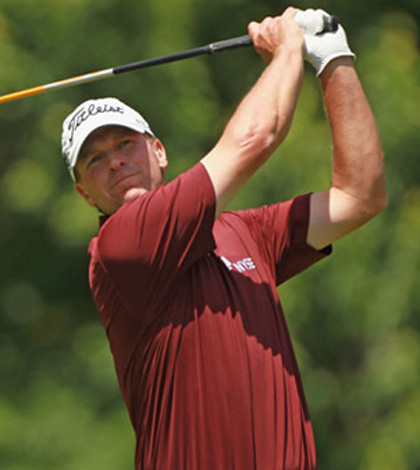
I’m often asked by my readers what current PGA Tour player’s game I would prefer to have based upon my statistical research. To answer their question, I decided to look at the data and split the game into certain key metrics and base it upon a Tour player’s history. Hopefully for those at home, this will get people pointed in the right direction as to which players to observe when it comes to certain categories of the game.
DRIVING THE BALL
Variables to consider:
- Driving distance.
- Fairway percentage.
- Average distance from the edge of the fairway.
- Percent of times in a fairway bunker.
- “Missed Fairway — Other.”
Based on those variables, I use an algorithm that determines how effectively a player drives the ball. I call it “driving effectiveness.”
I also consider how well a golfer drives the ball off the tee when he is not hitting his driver. Looking at ShotLink data, I can tell you that most golfers would be surprised how many Tour players struggle hitting a 3 wood off the tee. We also have to consider ball height as in general, as high ball hitters have statistically fitted into today’s modern courses. I believe this is because the modern TPC courses are filled with forced carries.
With that, I would pick Boo Weekley, who has finished in my top 10 in Driving Effectiveness in each of the last three seasons. He’s one of the best fairway wood players in the game as well. He hits it long, accurate and precise.
Honorable Mention: Keegan Bradley, Graeme McDowell, Hunter Mahan, Graham DeLaet
Top Newcomer: Jordan Spieth
BIRDIE ZONE PLAY (75 to 125 YARDS)
Birdie Zone play (along with the rest of the zones) is based on the player’s average proximity to the cup. What I have generally found is that the golfers who perform best from the Birdie Zone tend to have less forward shaft lean at impact. There are some players who are usually very good Birdie Zone players such as Sergio Garcia. This makes me believe that Birdie Zone play is more about controlling the shaft lean and that the players with less forward shaft lean tend to do the best job of controlling it.
There are quite a few players on Tour that consistently perform well in the Birdie Zone, but I would pick Steve Stricker above them all based on his performance over the years.
Honorable Mention: Brian Gay, Camilo Villegas, Charlie Wi, Luke Donald, Charl Schwartzel
Top Newcomer: Paul Haley II
SAFE ZONE PLAY (125 to 175 YARDS)
The Safe Zone consists of short and mid irons for Tour players. It is also the zone where the most frequent amount of approach shot happens.
There are generally three ways to become extremely good in the Safe Zone:
- Keep the drive in the fairway a high percentage of time (80-plus percent).
- Become an excellent player out of the rough.
- Be a superior irons player from this distance.
For this article, I’m more concerned with the golfer’s pure ability to hit shots from this distance instead of the golfer who consistently keeps his ball in the fairway and ends up having an easier approach shot into the green than the golfer who is hitting shots out of the rough.
Out of all of the players, I would give this to Bud Cauley, as he has been excellent the past two years from the Safe Zone, whether he is hitting it from the fairway or the rough.
Honorable Mention: Lee Westwood, Tim Clark, Luke Donald, Ken Duke, Rory Sabbatini
Top Newcomer: Jordan Spieth
DANGER ZONE PLAY (175 to 225 YARDS)
There is a misconception that long hitters or excellent drivers of the ball goes hand in hand with good Danger Zone play. The assumption is that a long hitter will be hitting shorter clubs into the hole, and therefore has an easier shot. While that is true, he still has to be able to hit the ball well even if he has a shorter club. And there are plenty of excellent drivers of the ball that cannot hit it from the Danger Zone (i.e. Blake Adams, John Rollins and Bill Haas). Conversely, there are excellent Danger Zones that are terrible drivers of the ball (Mickelson, Romero and Michael Thompson).
One way to “cheat the system” is for players to keep the ball in the fairway when they are in the Danger Zone. I recommend this for ALL golfers when they are facing a very long par 4. Focus on finding the fairway with your driver instead of trying to swing harder in hopes of gaining a few yards.
Like the Safe Zone, I’m more interested in a “pure Danger Zone player” than one who smartly finds the fairway here repeatedly. That’s why I take Robert Garrigus. Most of the longer hitters on Tour hit very few of their Danger Zone shots from the rough because they usually are rarely in the Danger Zone on long par 4’s. Instead, they are usually hitting these Danger Zone shots from the tee box on par 3’s.
Garrigus is one of the exceptions, and he does hit quite a few Danger Zone shots from the rough, which indicates he is fairly conservative off the tee. However, he’s continually one of the best on Tour from the Danger Zone and is ranked first, by a long shot, from the Danger Zone this season.
Honorable Mention: Jim Furyk, David Toms, Boo Weekley, Phil Mickelson, Tiger Woods
Top Newcomer: D.H. Lee
225 to 275 YARDS ZONE
This zone is what I call a “volatile” metric, meaning that players rarely perform well from here year after year. One year a player may be one of the best on Tour and then the next year they may be one of the worst. We start to see this distance favoring longer hitters a little more noticeably.
It’s hard to argue against Tiger, since no one has hit more clutch shots from this distance than he has over the years.
Honorable Mention: Gary Woodland, George McNeill, Boo Weekley, Scott Stallings, Michael Thompson
Top Newcomer: Morgan Hoffmann
SHOTS FROM THE ROUGH
Shots from the rough are a bit difficult to quantify because rough tends to get longer as the ball is hit farther away from the fairway. While the data suggests that shots from the rough favor players who generate more club head speed, there are plenty of players with less club head speeds that play well from the rough. But, the issue may be that those lower club head speed players are keeping the ball closer to the edge of the fairway and are hitting from shorter rough grass.
Typically, Sergio Garcia has been one of the very best players from the rough over the years. However, I would take Mickelson, who has been practically as good. And if there was ever a golfer I needed to hit an impossible shot from the rough, it would be Lefty.
Honorable Mention: Sergio Garcia, Chris Couch, Dustin Johnson, Jonathan Byrd, Ken Duke
Top Newcomer: Morgan Hoffmann
SHOTS FROM THE FAIRWAY
Shots from the fairway actually have a far greater correlation to a golfer’s success on Tour than shots from the rough. That’s because most of their approach shots come from the fairway or the tee box. Therefore, shots from the fairway do not favor any style of play other than quality ballstrikers.
For my money, I would take Steve Stricker in a Big Break style contest if every shot was from the short grass. Stricker also finished first in my Shots from the Fairway metric in 2012.
Honorable Mention: Jeff Maggert, Jim Furyk, Rory McIlroy, Webb Simpson, Tiger Woods
Top Newcomer: Brian Stuard
PLAYING IN WINDY CONDITIONS
I have been doing some preliminary research on playing into the wind. From what I have researched thus far, it tends to favor golfers whom have a downward attack angle with the driver and are very good from the Birdie Zone. My initial thoughts is that the downward attack angle keeps the ball low, which makes them more comfortable in the wind. I think the Birdie Zone play has to do with having more Birdie Zone shots on the par 5’s and thus, the better wedge players can convert birdies on those holes.
My initial research shows that the best player in windy conditions (13-plus mph winds) is Charl Schwartzel.
Honorable mention: Tiger Woods, Boo Weekley, Chris Stroud, John Merrick, Trevor Immelman
Top Newcomer: N/A
SHORT GAME PLAY (LESS THAN 20 YARDS)
Part of short game play is not only the golfer’s skill around the green, but where they leave their approach shots. It is impossible to decipher where exactly the approach shots are left. That would make a strong case for Mickelson. But, I will go with Chris Riley, who has consistently been a top-5 player in Short Game play for years.
Honorable Mention: Phil Mickelson, Brian Gay, Charlie Wi, Ian Poulter, Jerry Kelly
Top Newcomer: James Hahn
PUTTING
This is based off the metric “Putts Gained.” The research has shown that putts from 3 to 15 feet have the largest correlation to Putts Gained performance. This is in part because putts made from longer than 15 feet are a volatile metric. In fact, the average Tour player makes one birdie putt from longer than 25 feet every 98 holes they play. As I have discussed here before, going low on Tour is about getting the ball inside 15 feet to the hole for birdie on a consistent basis — it is not about making a lot of bombs.
There are a lot of terrific putters on Tour. But, the one player who has stood out has been Luke Donald. Donald ranked first in Putts Gained in 2010, 2011 and 2012. He “slipped” last year falling to third in the metric.
Honorable Mention: Greg Chalmers, Aaron Baddeley, Tiger Woods, Bryce Molder, Brian Gay
Top Newcomer: Russell Henley
- LIKE2
- LEGIT0
- WOW0
- LOL0
- IDHT0
- FLOP0
- OB0
- SHANK0
Opinion & Analysis
The Wedge Guy: What really makes a wedge work? Part 1

Of all the clubs in our bags, wedges are almost always the simplest in construction and, therefore, the easiest to analyze what might make one work differently from another if you know what to look for.
Wedges are a lot less mysterious than drivers, of course, as the major brands are working with a lot of “pixie dust” inside these modern marvels. That’s carrying over more to irons now, with so many new models featuring internal multi-material technologies, and almost all of them having a “badge” or insert in the back to allow more complex graphics while hiding the actual distribution of mass.
But when it comes to wedges, most on the market today are still single pieces of molded steel, either cast or forged into that shape. So, if you look closely at where the mass is distributed, it’s pretty clear how that wedge is going to perform.
To start, because of their wider soles, the majority of the mass of almost any wedge is along the bottom third of the clubhead. So, the best wedge shots are always those hit between the 2nd and 5th grooves so that more mass is directly behind that impact. Elite tour professionals practice incessantly to learn to do that consistently, wearing out a spot about the size of a penny right there. If impact moves higher than that, the face is dramatically thinner, so smash factor is compromised significantly, which reduces the overall distance the ball will fly.
Every one of us, tour players included, knows that maddening shot that we feel a bit high on the face and it doesn’t go anywhere, it’s not your fault.
If your wedges show a wear pattern the size of a silver dollar, and centered above the 3rd or 4th groove, you are not getting anywhere near the same performance from shot to shot. Robot testing proves impact even two to three grooves higher in the face can cause distance loss of up to 35 to 55 feet with modern ‘tour design’ wedges.
In addition, as impact moves above the center of mass, the golf club principle of gear effect causes the ball to fly higher with less spin. Think of modern drivers for a minute. The “holy grail” of driving is high launch and low spin, and the driver engineers are pulling out all stops to get the mass as low in the clubhead as possible to optimize this combination.
Where is all the mass in your wedges? Low. So, disregarding the higher lofts, wedges “want” to launch the ball high with low spin – exactly the opposite of what good wedge play requires penetrating ball flight with high spin.
While almost all major brand wedges have begun putting a tiny bit more thickness in the top portion of the clubhead, conventional and modern ‘tour design’ wedges perform pretty much like they always have. Elite players learn to hit those crisp, spinny penetrating wedge shots by spending lots of practice time learning to consistently make contact low in the face.
So, what about grooves and face texture?
Grooves on any club can only do so much, and no one has any material advantage here. The USGA tightly defines what we manufacturers can do with grooves and face texture, and modern manufacturing techniques allow all of us to push those limits ever closer. And we all do. End of story.
Then there’s the topic of bounce and grinds, the most complex and confusing part of the wedge formula. Many top brands offer a complex array of sole configurations, all of them admittedly specialized to a particular kind of lie or turf conditions, and/or a particular divot pattern.
But if you don’t play the same turf all the time, and make the same size divot on every swing, how would you ever figure this out?
The only way is to take any wedge you are considering and play it a few rounds, hitting all the shots you face and observing the results. There’s simply no other way.
So, hopefully this will inspire a lively conversation in our comments section, and I’ll chime in to answer any questions you might have.
And next week, I’ll dive into the rest of the wedge formula. Yes, shafts, grips and specifications are essential, too.
- LIKE13
- LEGIT4
- WOW1
- LOL1
- IDHT2
- FLOP2
- OB1
- SHANK1
Golf's Perfect Imperfections
Golf’s Perfect Imperfections: Amazing Session with Performance Coach Savannah Meyer-Clement

In this week’s episode, we spent some time with performance coach Savannah Meyer-Clement who provides many useful insights that you’ll be able to implement on the golf course.
- LIKE0
- LEGIT0
- WOW0
- LOL0
- IDHT0
- FLOP0
- OB0
- SHANK0
19th Hole
Vincenzi’s 2024 RBC Heritage betting preview: Patrick Cantlay ready to get back inside winner’s circle

Just a two-hour drive from Augusta National, the PGA TOUR heads to Harbour Town Golf Links in Hilton Head Island, S.C. Hilton Head Island is a golfer’s paradise and Harbour Town is one of the most beautiful and scenic courses on the PGA TOUR.
Harbour Town Golf Links is a par-71 that measures 7,121 yards and features Bermuda grass greens. A Pete Dye design, the course is heavily tree lined and features small greens and many dog legs, protecting it from “bomb-and-gauge” type golfers.
The field is loaded this week with 69 golfers with no cut. Last year was quite possibly the best field in RBC Heritage history and the event this week is yet another designated event, meaning there is a $20 million prize pool.
Most of the big names on the PGA Tour will be in attendance this week with the exceptions of Hideki Matsuyama and Viktor Hovland. Additionally, Webb Simpson, Shane Lowry, Gary Woodland and Kevin Kisner have been granted sponsors exemptions.
Past Winners at Harbour Town
- 2023: Matt Fitzpatrick (-17)
- 2022: Jordan Spieth (-13)
- 2021: Stewart Cink (-19)
- 2020: Webb Simpson (-22)
- 2019: CT Pan (-12)
- 2018: Sotoshi Kodaira (-12)
- 2017: Wesley Bryan (-13)
- 2016: Branden Grace (-9)
- 2015: Jim Furyk (-18)
In this article and going forward, I’ll be using the Rabbit Hole by Betsperts Golf data engine to develop my custom model. If you want to build your own model or check out all of the detailed stats, you can sign up using promo code: MATTVIN for 25% off any subscription package (yearly is best value).
Key Stats For Harbour Town
Let’s take a look at key metrics for Harbour Town Golf Links to determine which golfers boast top marks in each category over their past 24 rounds.
Strokes Gained: Approach
Strokes Gained: Approach is exceedingly important this week. The greens at Harbour Town are about half the size of PGA TOUR average and feature the second-smallest greens on the tour. Typical of a Pete Dye design, golfers will pay the price for missed greens.
Total SG: Approach Over Past 24 Rounds
- Scottie Scheffler (+1.27)
- Tom Hoge (+1.27)
- Corey Conners (+1.16)
- Austin Eckroat (+0.95)
- Cameron Young (+0.93)
Good Drive %
The fairways at Harbour Town are tree lined and feature many dog legs. Bombers tend to struggle at the course because it forces layups and doesn’t allow long drivers to overpower it. Accuracy is far more important than power.
Good Drive % Over Past 24 Rounds
- Brice Garnett (88.8%)
- Shane Lowry (+87.2%)
- Akshay Bhatia (+86.0%)
- Si Woo Kim (+85.8%)
- Sepp Straka (+85.1%)
Strokes Gained: Total at Pete Dye Designs
Pete Dye specialists tend to play very well at Harbour Town. Si Woo Kim, Matt Kuchar, Jim Furyk and Webb Simpson are all Pete Dye specialists who have had great success here. It is likely we see some more specialists near the top of the leaderboard this week.
SG: TOT Pete Dye per round over past 36 rounds:
- Xander Schauffele (+2.27)
- Scottie Scheffler (+2.24)
- Ludvig Aberg (+2.11)
- Brian Harman (+1.89)
- Sungjae Im (+1.58)
4. Strokes Gained: Short Game (Bermuda)
Strokes Gained: Short Game factors in both around the green and putting. With many green-side bunkers and tricky green complexes, both statistics will be important. Past winners — such as Jim Furyk, Wes Bryan and Webb Simpson — highlight how crucial the short game skill set is around Harbour Town.
SG: SG Over Past 24 Rounds
- Jordan Spieth (+1.11)
- Taylor Moore (+1.02)
- Wyndham Clark (+0.98)
- Mackenzie Hughes (+0.86)
- Andrew Putnam (+0.83)
5. Greens in Regulation %
The recipe for success at Harbour Town Golf Links is hitting fairways and greens. Missing either will prove to be consequential — golfers must be in total control of the ball to win.
Greens in Regulation % over past 24 rounds:
- Brice Garnett (+75.0%)
- Scottie Scheffler (+69.9%)
- Corey Conners (+69.0%)
- Shane Lowry (+68.3%)
- Patrick Rodgers (+67.6%)
6. Course History
Harbour Town is a course where players who have strong past results at the course always tend to pop up.
Course History over past 24 rounds:
- Patrick Cantlay (+2.34)
- Cam Davis (+2.05)
- J.T. Poston (+1.69)
- Justin Rose (+1.68)
- Tommy Fleetwood (+1.59)
The RBC Heritage Model Rankings
Below, I’ve compiled overall model rankings using a combination of the five key statistical categories previously discussed — SG: Approach (24%), Good Drives (20%), SG: SG (14%), SG: Pete Dye (14%), GIR (14%), and Course History (14%)
- Shane Lowry
- Russell Henley
- Scottie Scheffler
- Xander Schauffele
- Corey Conners
- Wyndham Clark
- Christiaan Bezuidenhout
- Matt Fitzpatrick
- Cameron Young
- Ludvig Aberg
2024 RBC Heritage Picks
Patrick Cantlay +2000 (FanDuel)
With the exception of Scottie Scheffler, the PGA Tour has yet to have any of their star players show peak form during the 2024 season. Last week, Patrick Cantlay, who I believe is a top-5 players on the PGA Tour, took one step closer to regaining the form that’s helped him win eight events on Tour since 2017.
Cantlay limped into the Masters in poor form, but figured it out at Augusta National, finishing in a tie for 20th and ranking 17th for the week in Strokes Gained: Ball Striking. The former FedEx Cup champion will now head to one of his favorite golf courses in Harbour Town, where he’s had immaculate results over the years. In his six trips to the course, he’s only finished worse than 7th one time. The other finishes include three third places (2017, 2019, 2023) and one runner-up finish (2022). In his past 36 rounds at Harbour Town, Cantlay ranks 1st in Strokes Gained: Total per round at the course by a wide margin (+2.36).
Cantlay is winless since the 2022 BMW Championship, which is far too long for a player of his caliber. With signs pointing to the 32-year-old returning to form, a “signature event” at Harbour Town is just what he needs to get back on the winning track.
Tommy Fleetwood +3000 (FanDuel)
I truly believe Tommy Fleetwood will figure out a way to win on American soil in 2024. It’s certainly been a bugaboo for him throughout his career, but he is simply too talented to go another season without winning a PGA Tour event.
At last week’s Masters Tournament, Fleetwood made a Sunday charge and ended up finishing T3 in the event, which was his best ever finish at The Masters. For the week, the Englishman ranked 8th in the field in Strokes Gained: Approach, 10th in Strokes Gained: Ball Striking and 16th in Strokes Gained: Putting.
Harbour Town is a perfect layout for Fleetwood, and he’s had relative success at this Pete Dye design in the past. In his four trips to the course, he’s finished inside of the top 25 three times, with his best finish, T10, coming in 2022. The course is pretty short and can’t be overpowered, which gives an advantage to more accurate players such as Fleetwood. Tommy ranks 8th in the field in Good Drive % and should be able to plot his way along this golf course.
The win is coming for Tommy lad. I believe there’s a chance this treasure of a golf course may be the perfect one for him to finally break through on Tour.
Cameron Young +3300 (FanDuel)
Cameron Young had a solid Masters Tournament last week, which is exactly what I’m looking for in players who I anticipate playing well this week at the RBC Heritage. He finished in a tie for 9th, but never felt the pressure of contending in the event. For the week, Young ranked 6th in Strokes Gained: Off the Tee and 6th in Strokes Gained: Ball Striking.
Despite being one of the longest players off the tee on the PGA Tour, Young has actually played some really good golf on shorter tracks. He finished T3 at Harbour Town in 2023 and ranks 20th in the field in Good Drive% and 16th in Greens in Regulation in his past 24 rounds. He also has strong finishes at other shorter courses that can take driver out of a players hand such as Copperhead and PGA National.
Young is simply one of the best players on the PGA Tour in 2024, and I strongly believe has what it takes to win a PGA Tour event in the very near future.
Corey Conners +5500 (FanDuel)
Corey Conners has had a disappointing year thus far on the PGA Tour, but absolutely loves Harbour Town.
At last week’s Masters Tournament, the Canadian finished T30 but ranked 20th in the field in Strokes Gained: Approach. In his past 24 rounds, Conners ranks 3rd in the field in Strokes Gained: Approach, 3rd in Greens in Regulation % and 24th in Good Drive %.
In Conners’ last four trips to Harbour Town, his worst finish was T31, last season. He finished T4 in 2021, T12 in 2022 and ranks 8th in Strokes Gained: Total at the course over his past 36 rounds.
Conners hasn’t been contending, but his recent finishes have been encouraging as he has finished in the top-25 in each of his past three starts prior to The Masters, including an impressive T13 at The PLAYERS. His recent improvement in ball striking as well as his suitability for Harbour Town makes Conners a high upside bet this week.
Shane Lowry (+7500) (FanDuel)
When these odds were posted after Lowry was announced in the field, I have to admit I was pretty stunned. Despite not offering much win equity on the PGA Tour over the last handful of years, Shane Lowry is still a top caliber player who has the ability to rise to the top of a signature event.
Lowry struggled to score at The Masters last week, but he actually hit the ball really well. The Irishman ranked 1st for Strokes Gained: Approach on the week and 7th in Strokes Gained: Ball Striking. As usual, it was the putter that let him down, as he ranked 60th in the field in Strokes Gained: Putting.
Harbour Town is most definitely one of Lowry’s favorite courses on the PGA Tour. In his six starts there, he’s finished in the top 10 three times, including third twice. Lowry is sensational at Pete Dye designs and ranks 7th in Strokes Gained: Total in his past 36 rounds on Dye tracks.
Lowry is perfect for Harbour Town. In his past 24 rounds, he ranks 5th in Strokes Gained: Approach, 2nd in Good Drive% and 5th in Green in Regulation %. If he figures it out on the greens, Shane could have his first win in America since 2015.
Lucas Glover +12000 (FanDuel)
This is one of my weekly “bet the number” plays as I strongly believe the odds are just too long for a player of Glover’s caliber. The odds have been too long on Glover for a few weeks now, but this is the first event that I can get behind the veteran being able to actually contend at.
Glover is quietly playing good golf and returning to the form he had after the understandable regression after his two massive victories at the end of 2023. He finished T20 at The Masters, which was his best ever finish at Augusta National. For the week, Lucas ranked 18th for Strokes Gained: Approach and 20th in Strokes Gained: Ball Striking.
Over his past 24 rounds, Glover ranks 9th in Strokes Gained: Approach and 13th in Good Drive %. Harbour Town is a short course that the 44-year-old will be able to keep up with the top players on Tour off the tee. He’s played the course more than 20 times, with mixed results. His best finishes at Harbour Town include a T7 in 2008, but recently has a finish of T21 in 2020.
Glover has proven he can contend with the stars of the Tour on any given week, and this number is flat out disrespectful.
- LIKE30
- LEGIT5
- WOW2
- LOL1
- IDHT1
- FLOP2
- OB0
- SHANK2
-

 19th Hole1 week ago
19th Hole1 week agoDave Portnoy places monstrous outright bet for the 2024 Masters
-

 19th Hole3 weeks ago
19th Hole3 weeks agoThings got heated at the Houston Open between Tony Finau and Alejandro Tosti. Here’s why
-

 19th Hole1 week ago
19th Hole1 week agoTiger Woods arrives at 2024 Masters equipped with a putter that may surprise you
-

 19th Hole2 weeks ago
19th Hole2 weeks agoReport: Tiger Woods has ‘eliminated sex’ in preparation for the 2024 Masters
-

 19th Hole4 days ago
19th Hole4 days agoTwo star names reportedly blanked Jon Rahm all week at the Masters
-

 19th Hole4 days ago
19th Hole4 days agoNeal Shipley presser ends in awkward fashion after reporter claims Tiger handed him note on 8th fairway
-

 19th Hole3 days ago
19th Hole3 days agoReport: LIV Golf identifies latest star name they hope to sign to breakaway tour
-

 19th Hole2 weeks ago
19th Hole2 weeks agoAddiction, spinal fusion, and scam artists – Everything Anthony Kim revealed in candid interview with David Feherty

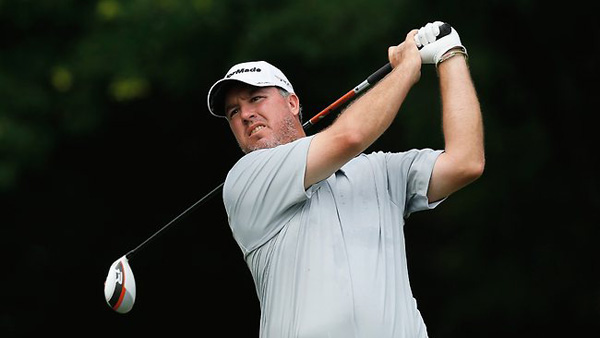
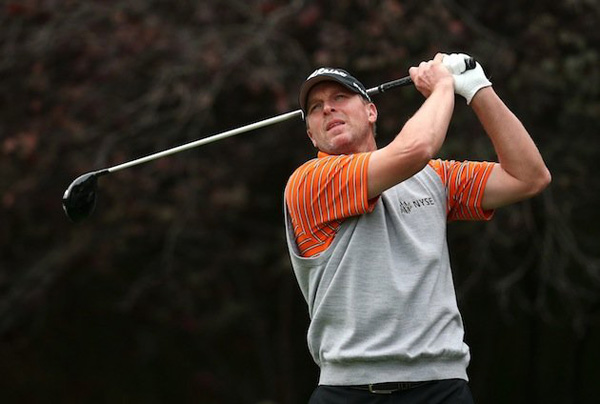
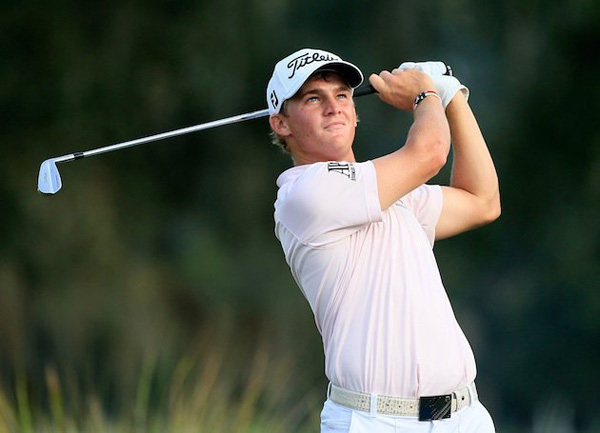
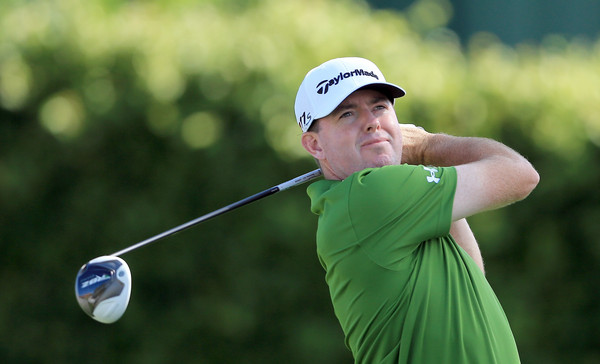
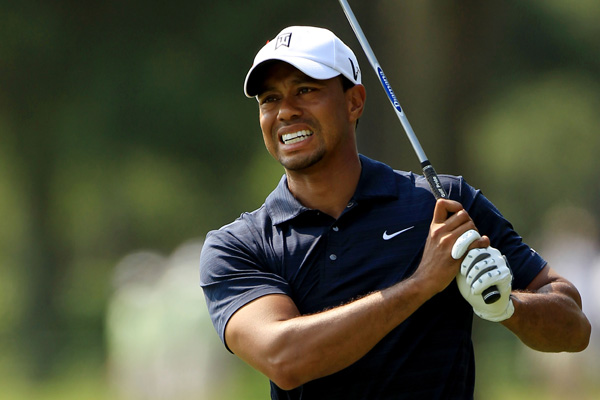
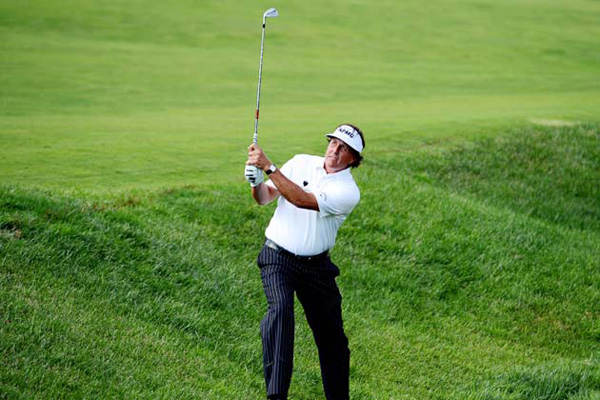
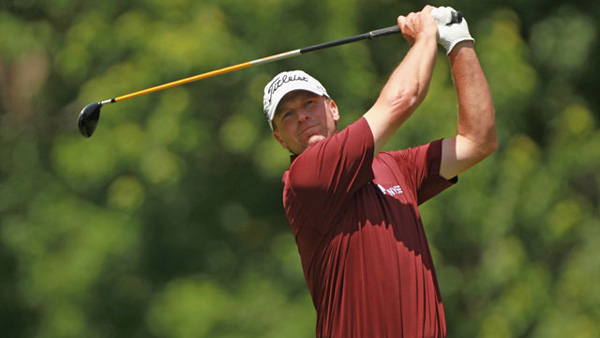
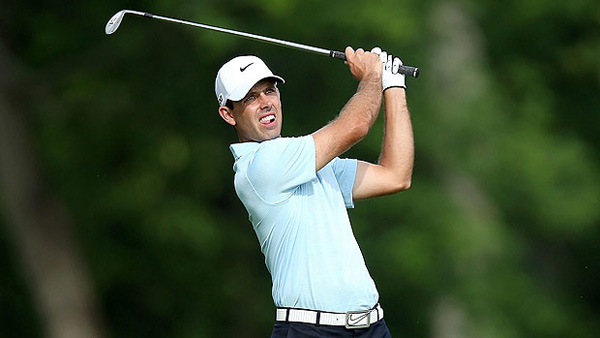
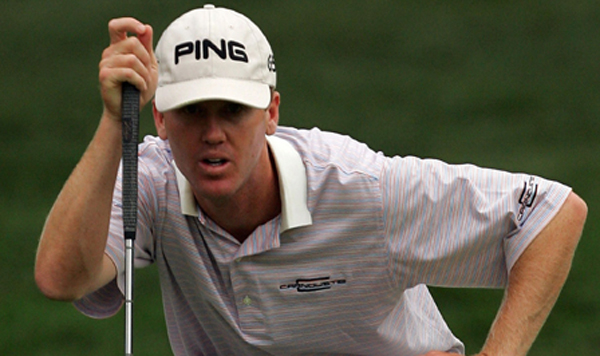
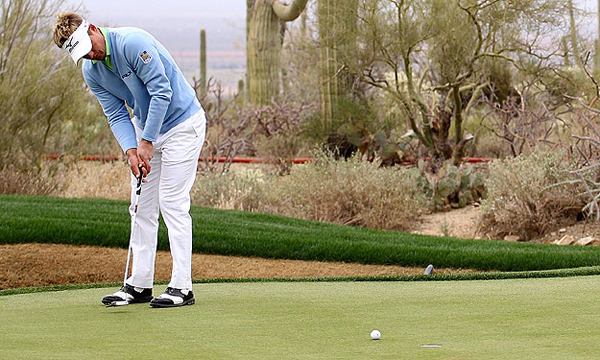


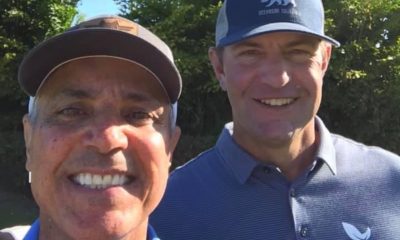









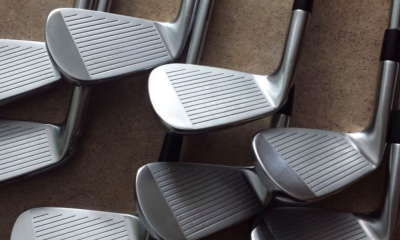














B MAC
Jul 13, 2013 at 3:36 am
Putting brandt snedeker ??
Richie Hunt
Jul 22, 2013 at 10:37 am
I agree. He’s one of the best on Tour. I would still take Luke Donald over him because that’s how incredible of a putter Luke Donald is.
wayne defrancesco
Jul 10, 2013 at 9:38 pm
You mention that from 75 to 125 yards players with less forward shaft lean tend to be better. Less than what? Poor players tend to have none, and so I end up teaching them to get as much as possible. What are the extremes? What is too much and what is optimum? What is the average for all players and what is Stricker’s average? What do you suggest as a goal? Is it different for different types of grass? Do it change for uneven lies?
As you can see, there are a lot of interesting questions when it comes to forward shaft lean. Rather than saying “less is better” it might be more instructive to be more detailed.
John
Jul 13, 2013 at 9:09 pm
I think he’s refereeing to your typical good ballstriker, people who can get around a course wit short g
Ame dictating score, not your average bloke who’s struggling to hit a 9 iron onto a green.
Richie Hunt
Jul 22, 2013 at 10:35 am
Wayne,
I try to stay away from actual instruction when doing these columns. I feel that is something best left to the professionals like yourself.
My comment was in regards to Tour players. The better Birdie Zone players tend to have less forward shaft lean at impact compared to the Tour as a whole. There are some players like Sergio that do quite well from this distance. However, Sergio has shown a lack of consistency from this distance over the years. Some year’s he’s great, other years he’s poor.
From the BZ for Tour players, it’s really all about distance control. When Tour players hits shots from longer distances, we start to see golfers with more forward shaft lean at impact doing better in these categories.
That’s why I tend to believe that BZ play is really about controlling the lean and there appears to be a correlation between players with less shaft lean on Tour and their ability to control that lean.
Obviously, your 20 handicap can likely use more forward shaft lean in general. But, if you have a 5 handicap that has major distance control issues with a wedge in their hand, they may want to develop a wedge swing where they have less forward shaft lean to help remedy that issue.
Tom Miller
Jul 9, 2013 at 10:53 pm
Next year you should add bunker shots / sand saves.
Richie Hunt
Jul 10, 2013 at 8:59 am
Thanks guys.
Tom – I wanted to do bunker shots, but the Tour’s recording of bunker shots is too vague for my tastes. I don’t like Sand Save % as a metric because it doesn’t really tell us if the golfer is a good bunker player or if they are a good putter.
They do have proximity to the cup from the sand, but it is for ALL greenside bunker shots. The problem is that the distances on those bunker shots can vary. So a golfer who is hitting it closer may be doing so because they have a shorter shot to begin with.
I have followed 20 different players for a project I’m doing throughout the year on Shot Tracker. From the limited data I have, I believe that Jason Day is the best bunker player on Tour.
paul
Jul 9, 2013 at 9:32 pm
I love golf stats and read all articles about them. keep it up!